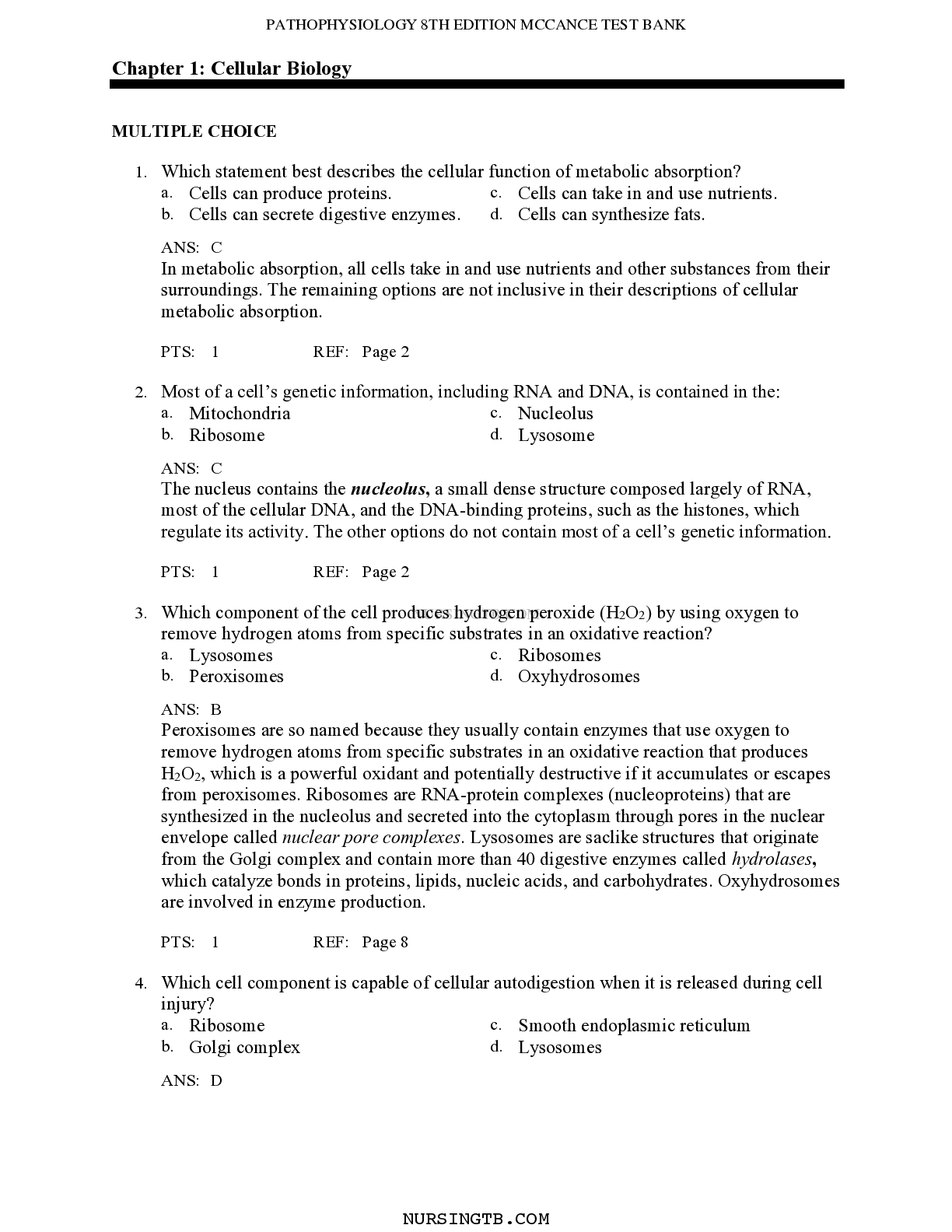PATHOPHYSIOLOGY 8TH EDITION MCCANCE TEST BANK .QUESTIONS and ANSWERS
Course
Project Management
Subject
Chemistry
Category
Questions and Answers
Pages
492
Uploaded By
ATIPROS
Preview 1 out of 492 Pages

Download all 492 pages for $ 18.00
Reviews (0)
$18.00
